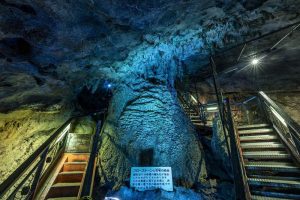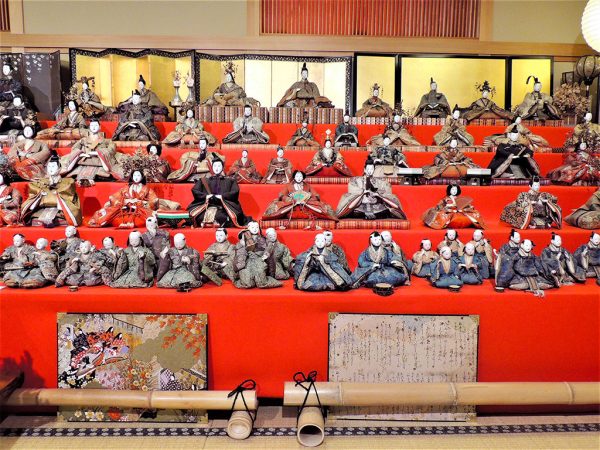Ono-kei Iwato Kagura
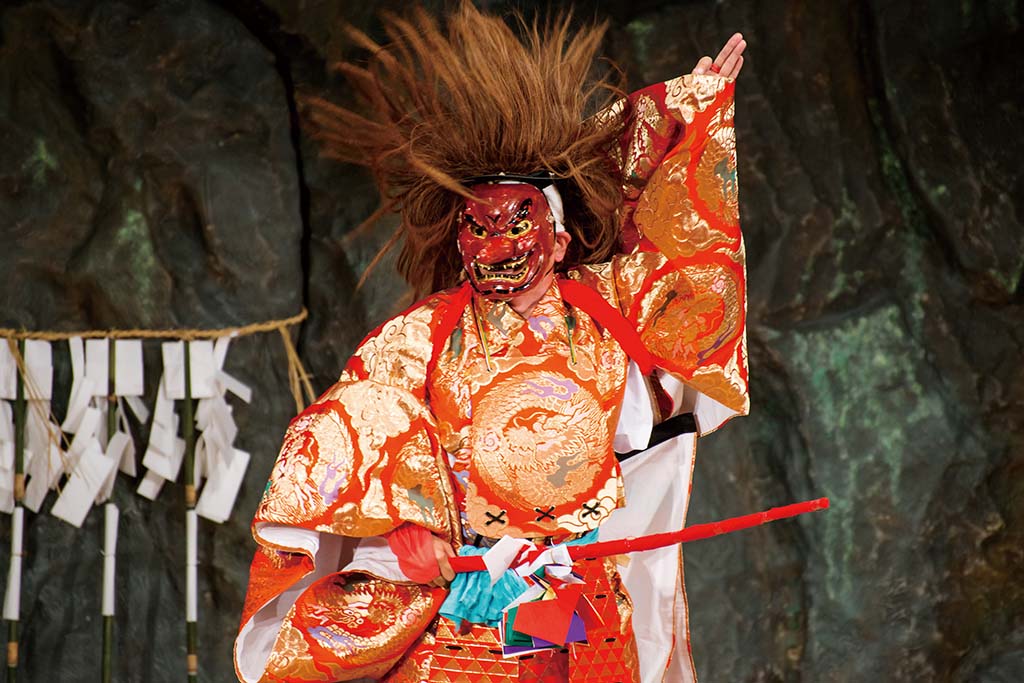
Ono-kei Iwato Kagura has a 400-year history.
The brave dances of the gods are performed by different schools,
It was widely spread in the village of Bungo-Ono.
The bustle of the banquet, where gods and people become one, echoes through the satoyama.
Ono-style Iwato Kagura Hall of Fame, with its brave and splendid dances

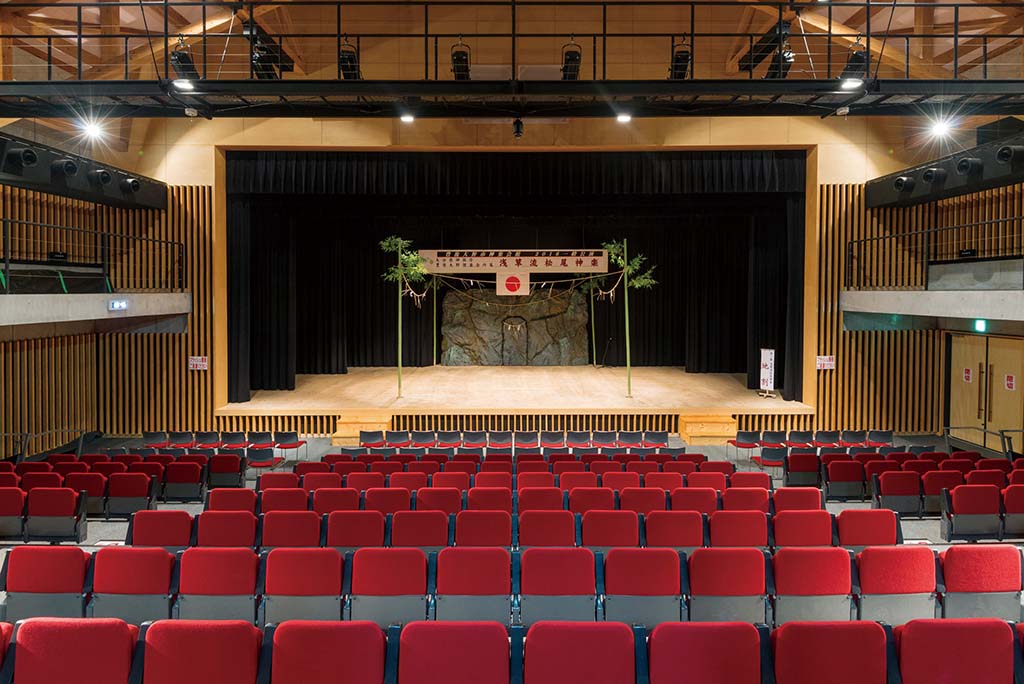
The southern area of Oita Prefecture, centering on Bungo-Ono City, is a region where many folk performing arts, including kagura, have been handed down. The Kagura Kaikan, located next to Michi no Eki Kiyokawa, is a hall of fame for these folk performing arts. Regular performances are held once a month, and kagura troupes from various regions perform there.
Performing on this day was Matsuo Kagura of the Asakusa school. This kagura troupe is a descendant of the Asakusa school, which is the most widely practiced of the Ono-style Iwato Kagura handed down in this region. Although kagura has an image of being forbidden to women, women have been participating in kagura for more than 10 years now. The era of male-female kagura is over, and both Amaterasu Omikami and Ame-no-Uzume-no-mikoto were originally female deities in kagura (laugh)," says Yukio Takano, head of the troupe's kagura troupe. For the past 11 years, they have formed a children's kagura group with the aim of revitalizing the local community and fostering the sound development of young people. Some of the children who studied here have joined the kagura troupe as adults and are active as leaders of the next generation.
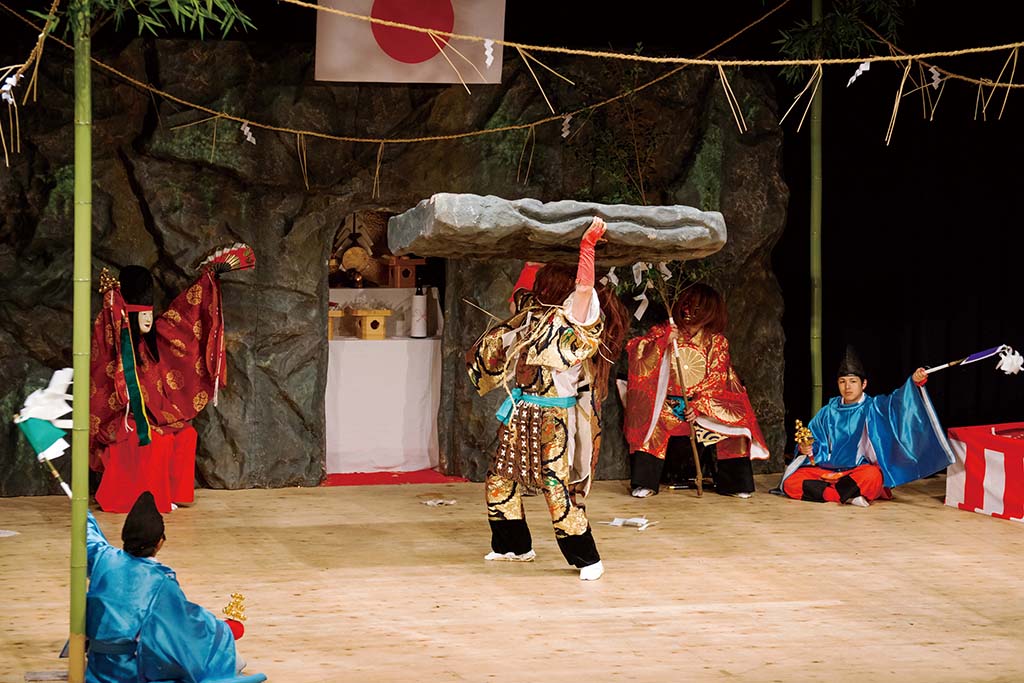

Four of the 34 dances will be performed during the three-hour performance. Although the program varies from day to day, all of them are based on the myth of the descent of the grandchildren as depicted in the Kojiki and Nihonshoki, and the scenes in which they appear are expressed in the dances. The highlight of the performance is a dialogue between Sartahiko and Ame-no-Uzume-no-mikoto, which is called "Jiwari," followed by "Gokoku" and "Shibahiki," and finally the climax, "Iwato" (Iwato). The dancers' heroic performance to the lively sounds of flutes and drums attracts the audience. In "Shibabiki," the god Aragami and audience members pull sakaki (sakaki) against each other in a contest of strength, and in "Gokoku," Susanoo-no-mikoto sprinkles rice cakes toward the audience, a dance that encourages audience participation. This is a performance unique to sato kagura, which has the aspect of an offering to the gods as thanks for a bountiful harvest, but also has the meaning of entertainment for the people of the village.
It has been more than 400 years since the Ontake Kagura, the origin of the Ono-type Iwato Kagura, began. The village of Bungo-Ono is burning hotter and hotter.
Bungo Ono City Kagura Hall
| name | 810 Sunada, Kiyokawa-cho, Bungo-Ono City, Oita Prefecture ☎ 0974-35-2372 |
|---|---|
| Access | Approximately 45 minutes from the Oita Yoneira IC of the Oita Expressway |
| supplementary information | Related URL:. https://www.kagura-kaikan.jp/ |


